Years ago, a friend invited me to something called Brazenhead Books, only she didn’t call it that. She, like everyone else, called it “the secret bookstore”. Except it wasn’t a bookshop so much as a small apartment on Manhattan’s Upper East Side, deliriously overstuffed with paperbacks and presided over by a bearded guy named Michael Seidenberg. On certain nights Seidenberg, who exudes a maverick ingenuousness, might open up his treasure cave for late-night salons where a bottle of whiskey is generally understood to be the entrance fee. Perhaps a couple of books will be exchanged for a few dollars (I once bought a bright green, 1969 first edition of Renata Adler’s Toward a Radical Middle from him for about five bucks) but sales aren’t really the point. In a city like New York, a place increasingly beholden to money, it’s good to be reminded that there are other forms of currency. Not just the civility of a bottle of bourbon, but those other, priceless currencies, too, the ones that New Yorkers don’t like to invoke because they all sound embarrassingly earnest: community, human connection and the preservation of knowledge and ideas.
Seidenberg, pictured kingly in his throne of a wicker chair, feet spread, pipe in mouth, is one of around 50 New York indie booksellers featured in a series of portraits by Philippe Ungar and Franck Bohbot, a pair of bibliophilic Frenchmen who met and befriended each other in Brooklyn. The two, writer and photographer respectively, have taken great pleasure in travelling across the city, to neighbourhoods in every borough, to meet and photograph booksellers in their habitats. Despite their diversity, the way their distinct personalities and passions are reflected and amplified in their shops, they are all, says Ungar, “looking for the same thing – a generous vision of sharing culture”. Ungar mentions Corey Farach, owner of the scruffy, adored and longstanding feminist bookshop Bluestockings. Farach, as Ungar recounts with admiration, encourages those people who can’t afford to buy a $40 book to take a seat, make themselves comfortable, and just read it in the shop. “That is to me,” says Ungar, “the spirit of the indie booksellers.” Because, as he sees it, “a bookstore is much more than a bookstore, it’s much more than selling books. It’s a public shelter. Whoever you are, you don’t have to buy anything, they won’t ask you for your ID. You’re free – you can stay for hours and browse. There’s a generosity, an optimism. And that’s what we wanted to enhance.”
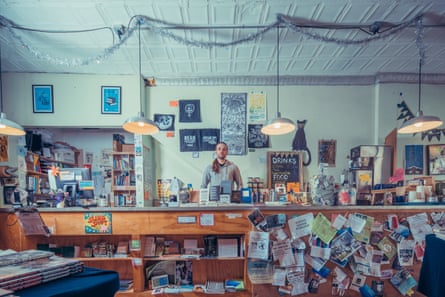
In this way, indie bookshops are outposts of idealism. And if they seem like the most romantic places in the city, it might be down to this – to the way their owners and customers (although “guests”, frankly, seems a more appropriate term) might all be engaged in the same project, a kind of sanctuary building in the unsheltered world. No one is getting rich from indie bookselling, yet everyone Ungar and Bohbot spoke to professed contentment. “Everyone,” Ungar stresses. “Every bookseller says: ‘I’m happy.’” He mentions Bonnie Slotnick, who runs Bonnie Slotnick Cookbooks in the East Village, a small space crammed with vintage titles. Slotnick acknowledged to Ungar that she was not doing something vital, at least not in the way most people understand it. She was not a soldier or a doctor or a scientist curing disease. And yet she thought there was a place in the world for people who are just making other people happy.
“They are heroes of their neighbourhood, monuments of their neighbourhood,” declares Bohbot, who sought to shoot them accordingly, with dramatic, dimmed lighting and cinematic composition in which the subject is alone, surrounded by their books. Often, there’s a poignancy to this heroism; the photos are haunted with a question: how much longer can they last? New York, a city unsentimental about its past, endlessly, relentlessly revises itself. That extends to its bookshops, many of which have fallen to astronomically rising rents. St Mark’s Bookshop, for example, which opened in 1977 and became a sort of literary HQ for punks, was the oldest independent bookshop in Manhattan until it closed in 2016, despite celebrity support from Patti Smith and Salman Rushdie.

Three Lives & Company, an extremely charming West Village shop run by Toby Cox, a gentle, stooped guy in a knit hat, looked to go the same way as St Mark’s but narrowly escaped closure in 2016 after an upswell of neighbourhood support. Oliver’s Realty Group, which owns the building, provided a statement in a letter Cox sent out to his customers: “We know how beloved Three Lives is in the West Village and we’re thrilled to provide it with stability.”
Like actual endangered species, independent bookshops induce a fiercely protective kind of love; paradoxically, it’s often their precarity that saves them. Bohbot says he wants people to view his images and feel “we don’t know which year we are – we don’t know if it’s the future or the past”. He adds: “I want to stop time - I’m trying to keep them for ever, in this photo.”
Like a bookshop, then, it’s an act of preservation.
Hermione Hoby’s debut novel, Neon in Daylight, will be published by Weidenfeld & Nicolson on 26 July
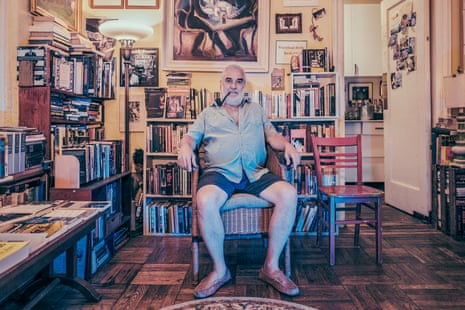
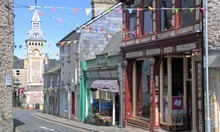
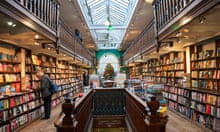
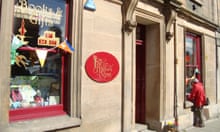
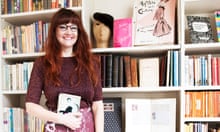

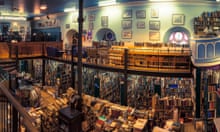
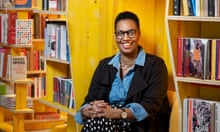

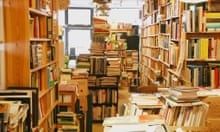
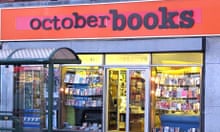
Comments (…)
Sign in or create your Guardian account to join the discussion